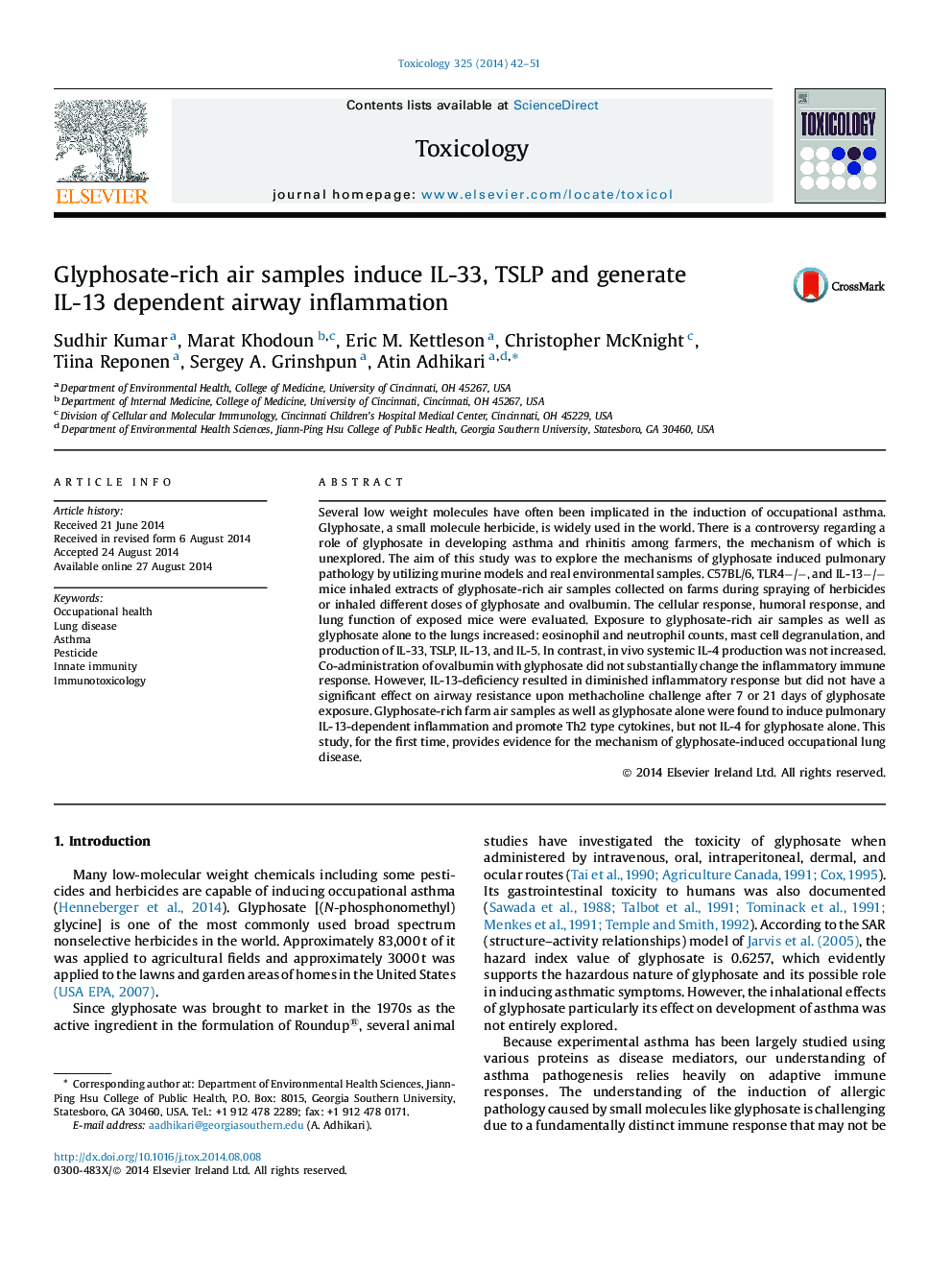| کد مقاله | کد نشریه | سال انتشار | مقاله انگلیسی | نسخه تمام متن |
|---|---|---|---|---|
| 5859142 | 1562331 | 2014 | 10 صفحه PDF | دانلود رایگان |

- Glyphosate-rich air samples induce antigen-independent airway inflammation.
- Glyphosate causes high expression of IL-33 and TSLP during the airway inflammation.
- Glyphosate exposure in airways produces canonical Th2 cytokines.
- Glyphosate-associated airway inflammation is partially dependent on IL-13.
- IL-13, TSLP, IL-33 can be potential targets to control glyphosate-induced inflammation.
Several low weight molecules have often been implicated in the induction of occupational asthma. Glyphosate, a small molecule herbicide, is widely used in the world. There is a controversy regarding a role of glyphosate in developing asthma and rhinitis among farmers, the mechanism of which is unexplored. The aim of this study was to explore the mechanisms of glyphosate induced pulmonary pathology by utilizing murine models and real environmental samples. C57BL/6, TLR4â/â, and IL-13â/â mice inhaled extracts of glyphosate-rich air samples collected on farms during spraying of herbicides or inhaled different doses of glyphosate and ovalbumin. The cellular response, humoral response, and lung function of exposed mice were evaluated. Exposure to glyphosate-rich air samples as well as glyphosate alone to the lungs increased: eosinophil and neutrophil counts, mast cell degranulation, and production of IL-33, TSLP, IL-13, and IL-5. In contrast, in vivo systemic IL-4 production was not increased. Co-administration of ovalbumin with glyphosate did not substantially change the inflammatory immune response. However, IL-13-deficiency resulted in diminished inflammatory response but did not have a significant effect on airway resistance upon methacholine challenge after 7 or 21 days of glyphosate exposure. Glyphosate-rich farm air samples as well as glyphosate alone were found to induce pulmonary IL-13-dependent inflammation and promote Th2 type cytokines, but not IL-4 for glyphosate alone. This study, for the first time, provides evidence for the mechanism of glyphosate-induced occupational lung disease.
Journal: Toxicology - Volume 325, 5 November 2014, Pages 42-51